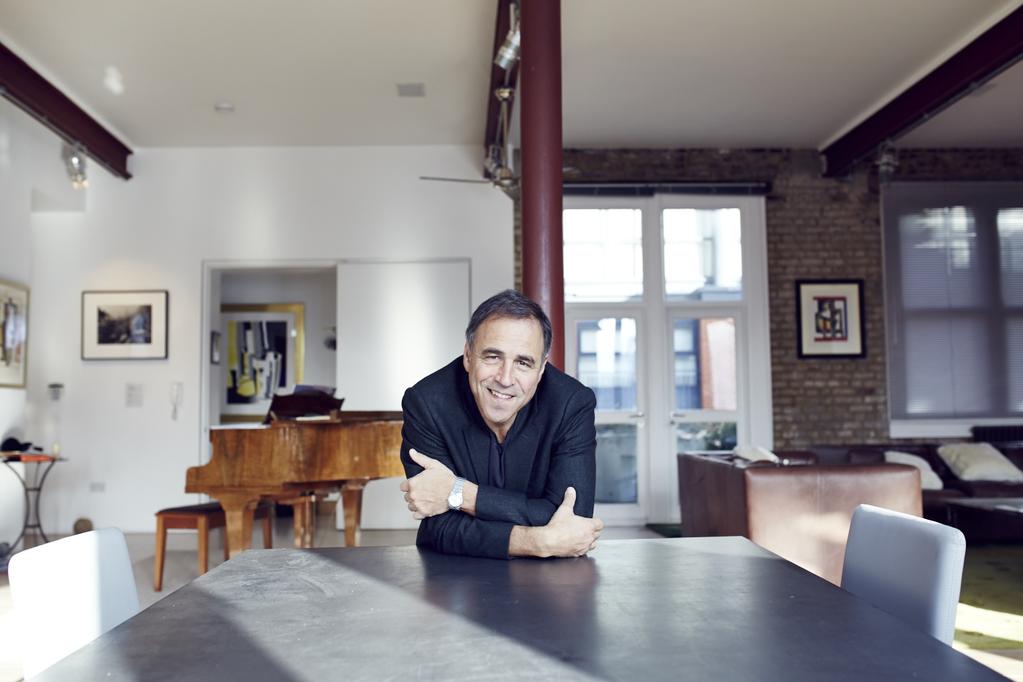Anthony Horowitz, writer of Foyle's War, explains how its fans helped bring the crime drama back from the dead
I suppose I shouldn’t have expected a gold watch, but I was mildly surprised when ITV decided to axe Foyle’s War, the series that I’d worked on for seven years. I was also disappointed. I’d only just reached 1944 after 18 two-hour episodes. We hadn’t even won the war!
I actually created the series in the summer of 2001. At the time, the idea was to move the ‘murder mystery’ series forward, to concentrate less on murders than on the landscape in which they took place. I’d always had a fascination with the war and in particular the history and mythology of the Home Front. I loved the idea of a detective solving murders at a time when murder was almost irrelevant. We set it in Hastings because that was as close to the real war as it was possible to get and that’s the tension at the heart of DI Foyle (who’s played by Michael Kitchen) himself. Thousands of people are dying just 50 miles away, across the water. So why should anyone care about a single death in an English seaside town?
The series has always had a devoted following – it’s actually sold in about 30 countries around the world. ITV had seen no slip in the ratings (the ‘final’ episode, in 2008, was watched by 7.3?million people), which made their decision all the more strange.
Part of the reason was financial. Foyle’s War is undoubtedly an expensive series to make. But senior executives also had their eye on their favourite chimera – the ‘yoof audience’. This was certainly a mistake. As far as I can tell, our viewers are not exclusively old.
And then came the audience feedback, the letters to the press. I wouldn’t say it was a storm of protest but it was certainly a squall and enough to get ITV to change its mind.
The only problem? For that ‘final’ episode, I’d fast-forwarded to VE Day, missing out 1944 in its entirety: no Sevastapol, no Monte Cassino, no Warsaw uprising. February 1944 saw a renewal of the Blitz on London. In June, the first flying bomb arrived.
But worse than all this, dramatically speaking, was the way I had been forced to deal with my main characters. Foyle hadn’t died, thank goodness, but he had finally retired (something he’d been threatening all along). Milner – his loyal sergeant, played by Anthony Howell – had been promoted and moved to Brighton. And even Sam (Honeysuckle Weeks) had lost her job as Foyle’s driver after he had revealed that all along he’d been able to drive.
When we were ‘invited’ back, I had lengthy conversations with the producer, Jill Green, and of course with Michael Kitchen. None of us wanted to proceed just for the hell of it. But we all agreed that there were still stories to tell.
The betrayal of the Russians was one of them. There were 1,200 Russian prisoners in Britain when the fighting ended; they had taken the side of the Germans against Stalin. Exactly what to do with them became one of the great issues of 1945 and their eventual betrayal – they were sent back to certain death – remains one of the war’s darkest secrets.
The treatment of black GIs (particularly at the hands of other Americans) was another territory we had long wanted to explore and this was taken up by the writer David Kane who had a personal interest (his own daughter is mixed race). And Terry Charman, my fount-of-all-knowledge at the Imperial War Museum, had intrigued me with his description of the bizarre unit of traitors known as the British Free Corps. It’s been one of the hallmarks of Foyle’s War that we have unearthed true stories that have never been told before and this is certainly true of the new season.
Honeysuckle Weeks had suggested that the new series should be called Foyle’s Peace but the war wasn’t over and wouldn’t officially end until August 15, 1945 when the Japanese surrendered.
This gave us three extraordinary months with soldiers coming home to children who had grown up without them, to wives who might have betrayed them, to jobs that were no longer there, to a world that now seemed as if it could get by without them. I was struck time and time again by the sense of anti-climax, by a feeling of, ‘What was it all for?’
It has taken a bit of patchwork but Milner is still involved in two of the new episodes and Sam is back, driving occasionally and close to Foyle, but now involved in a story-line of her own.
In some ways, the slight shock of our near demise has done us good. Without making too many changes to the basic formula, we’ve tried to shake things up a bit, to look at the characters in a different way.
From the opening all-action sequence of the first episode, The Russian House, which builds up to a truly breathtaking stunt (performed by stuntman Andy Wallace on an aqueduct in East Grinstead), the series is edgier and faster-paced. Solving crime was never really the raison d’être of Foyle’s War to begin with. But when I wrote this episode, I hoped it would feel a bit like an early Hitchcock.
Is this the last series? Well, the Second World War was followed, of course, by the Cold War so our title still holds good. Foyle may be out of the police force, but he’s too young to retire. At the very end, he’s seen leaving for America on a personal vendetta but whether we follow him there or not remains to be seen.


